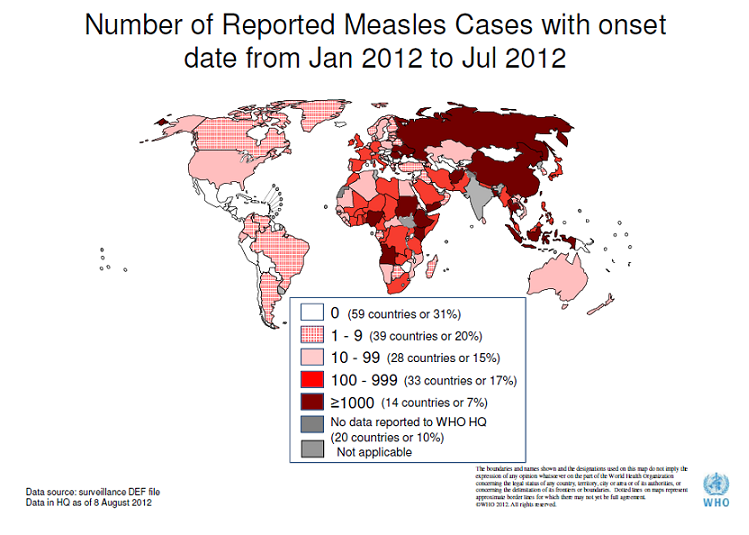Measles can kill!
It can also cause serious disabilities!
Measles is still a major cause of death and disability, especially in Africa. Measles is a serious disease because the measles virus infects the white blood cells that are supposed to kill germs. Instead of killing the measles virus, many white blood cells end up making more copies of the virus. As a result, the measles infection damages the immune system. In fact, the measles virus was the first viral infection that was known to suppress the immune system. Most of the deaths from measles result from secondary infections, such as pneumonia. However, the measles virus itself can cause death.

Measles is particularly deadly in poor countries because many children are malnourished and have other health problems, such as malaria or HIV infection. Improvements in general medical care, such as the introduction of antibiotics, has decreased the death rate among measles patients. Yet even with the best of modern medical care, measles still does kill a small percentage of the people it infects. It can also cause permanent disabilities, such as blindness.
Here is a video about a young woman who developed serious mental disabilities as a result of measles encephalitis. She had not been vaccinated against measles because of a minor skin condition.
Here is a story about an even more serious complication of measles infection: subaute sclerosing panencephalitis (SSPE). It occurs in children who catch the measles when they are very young, often too young to be vaccinated. They seem to recover from the measles, and then they seem perfectly healthy for years. Eventually, however, the chronic measles virus infection causes progressive damage to the brain and ultimately death.
Measles does kill. It can also cause blindness, deafness, and mental disabilities. Fortunately, the measles vaccine is highly effective and remarkably safe. In December of 2014, an epidemic of measles broke out at Disneyland, in California. From there, it spread to many different states. Here’s a discussion of the personal, social, and economic costs of this preventable outbreak:
Even though measles is one of the most highly contagious diseases known to medical science, we can wipe measles off the face of the earth through a comprehensive worldwide vaccination program. After that, there will be no more measles—and no more need for the measles vaccine. Here’s a map of the number of measles cases per country in 2012, from the World Health Organization:

The World Health Organization’s strategic plan to eradicate measles and rubella calls for high levels of vaccination, along with efforts to contain outbreaks.
The measles vaccine is a “live” vaccine. As such, it has never contained the mercury-containing preservative thiomersal. The measles vaccine is generally given in combination with the vaccine for mumps and the vaccine for rubella. There is no reason to give these vaccines separately. Giving the vaccines as separate injections simply means more injections for the child and more chance that one of the vaccines will be missed.
Because the measles virus is a “live” vaccine, it cannot be given to some people, including children with a suppressed immune system. Those individuals depend on the herd immunity that results from practically everyone else being vaccinated. Once measles has been wiped out through vaccination, we will no longer need to vaccinate anyone against it. For more information, visit the Web site of the Measles and Rubella Initiative.


